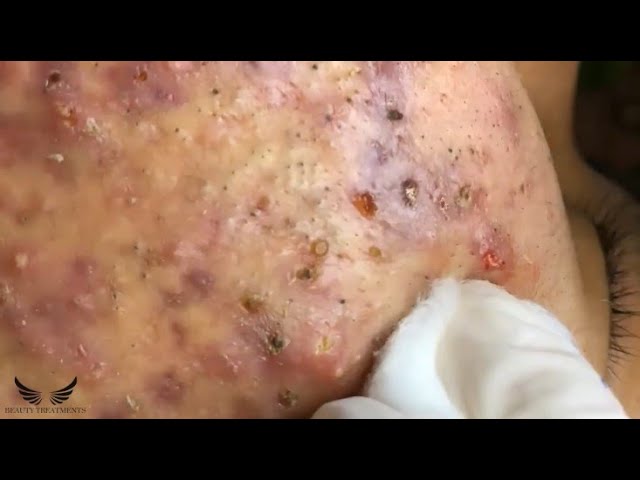Click Button Play To Watch Full Video 👇👇
What Your Acne Means By Location According to A Dermatologist
Acne is a common skin condition that affects people of all ages, and its location can provide essential clues about its underlying causes. Dermatologists often analyze where acne appears on the face and body to help diagnose potential issues and tailor treatment strategies. Understanding these patterns can empower individuals to address their acne more effectively.
Forehead and T-Zone Acne
Acne in the T-zone, which includes the forehead, nose, and chin, is often linked to excess oil production. This area is rich in sebaceous glands that can become overactive due to hormonal fluctuations, stress, or dietary choices. For example, diets high in refined sugars and dairy products may contribute to increased oiliness and breakouts. Additionally, lifestyle factors like wearing hats or headbands can trap sweat and bacteria, exacerbating acne.
To manage forehead acne, maintaining a consistent skincare routine is crucial. Gentle cleansing with a salicylic acid-based product can help unclog pores, while regular exfoliation can prevent dead skin buildup. Avoiding heavy hair products that can migrate to the forehead is also beneficial.
Cheek Acne
Cheek acne can arise from several factors, including environmental irritants, hormonal changes, and lifestyle habits. This area is particularly sensitive to external factors like pollution and cosmetics. Hormonal acne on the cheeks often manifests as painful cysts, especially in women during their menstrual cycles or in those experiencing polycystic ovary syndrome (PCOS).
To tackle cheek acne, choosing non-comedogenic skincare and makeup products is essential. Keeping personal items that come into contact with the face—such as phones and pillowcases—clean can significantly reduce the risk of breakouts. Additionally, regular exfoliation can help clear away dead skin cells and improve skin texture.
Chin and Jawline Acne
Acne on the chin and jawline is frequently associated with hormonal imbalances. In women, this can result from hormonal fluctuations during menstruation or conditions like PCOS. This type of acne often appears as deep, inflamed cysts that are resistant to topical treatments.
For chin and jawline acne, consulting a dermatologist is advisable. Hormonal therapies or oral contraceptives may be recommended to help stabilize hormone levels. Incorporating retinoids into your skincare regimen can also aid in promoting cell turnover and preventing clogged pores.
Back and Shoulder Acne
Known colloquially as “bacne,” acne on the back and shoulders often results from a combination of sweat, friction, and oil buildup. This type of acne can worsen due to tight clothing during physical activities, as well as the use of heavy lotions or creams that clog pores.
To effectively manage back and shoulder acne, using body washes that contain salicylic acid or benzoyl peroxide can help. Wearing breathable fabrics and promptly changing out of sweaty clothes can also reduce the likelihood of breakouts in these areas.
Conclusion
Understanding the location of acne can provide crucial insights into its causes, allowing for more effective treatment strategies. By recognizing these patterns and consulting with a dermatologist, individuals can tailor their skincare routines and make lifestyle adjustments to combat and prevent future breakouts. Awareness of the relationship between acne and its location not only aids in treatment but also promotes a deeper understanding of overall skin health, leading to clearer skin and enhanced self-confidence.
